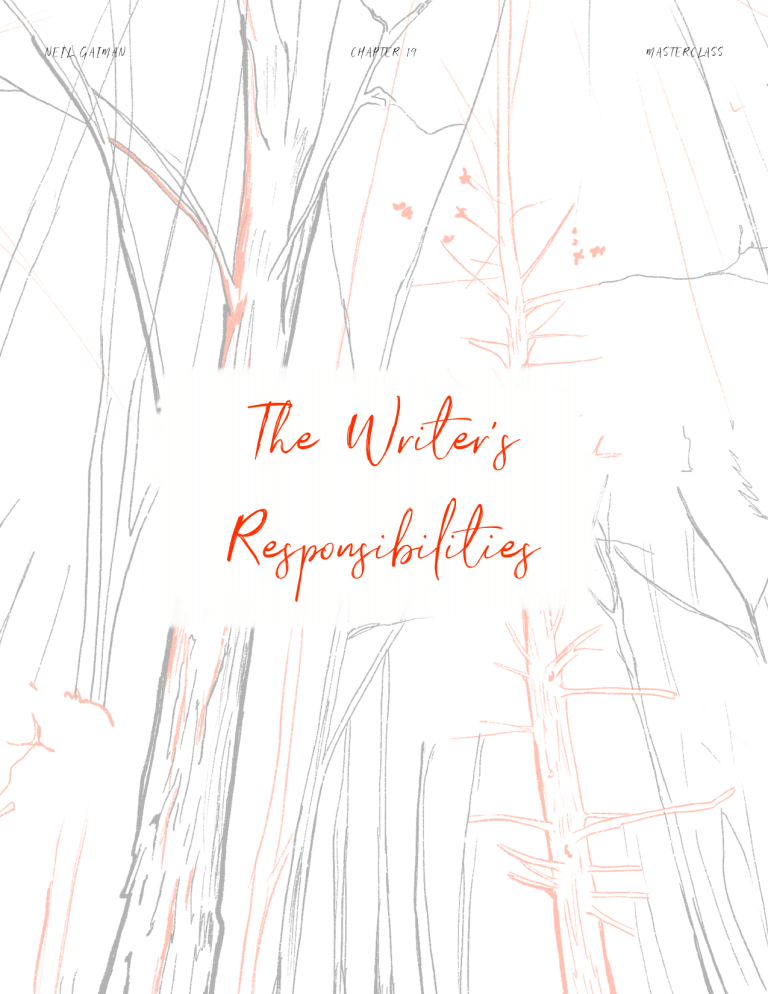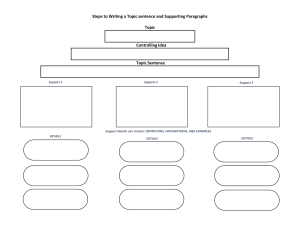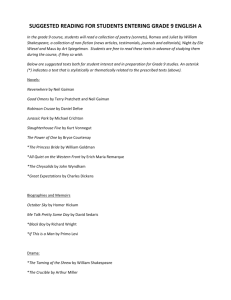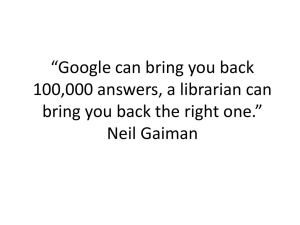
NEIL GAIMAN CHAPTER 19 The Writer's Responsibilities MASTERCLASS NEIL GAIMAN MASTERCLASS CHAPTER 19 The Writer's Responsibilities “We have to remember that the greatest triumphs and the greatest tragedies of the human race are nothing to do with people being basically good or people being basically evil. They’re all to do with people being basically people.” A ntagonism is one of the critical tools of storytelling. Stories don’t move forward without conflict, and conflict is produced by antagonists. These can be individual villains or forces of society (even forces of nature), but it’s important to consider how you treat any antagonist. They should be just as well-developed as your main character, and that will often mean understanding them, or, as Neil says, being willing to allow in other points of view. WRITING EXERCISES Think of a horrible person, or take one from your novel-in-progress, and try writing a few paragraphs from their POV on the following topics: A family member they miss Their most awkward moment A situation that embarrassed them Their worst loss “I decided my responsibility is to tell good stories, tell honest stories, tell them to as many people as I can. My responsibility is to encapsulate as much as I can the things I believe, but also…being willing to allow other points of view in.” Maybe back in college you had to write an essay and identify your controlling idea, the main argument you were making. The same phrase is used in storytelling to describe the message that resonates with readers at the climax of your novel. It can be positive or negative or even ironic, and it will come from you and your beliefs about the world. For a full discussion of controlling ideas see Robert McKee’s chapter “Structure and Meaning” in Story: Substance, Structure, Style, and the Principles of Screenwriting (1997). McKee argues that endings come in three forms: “up” endings express optimism, “down” endings are pessimistic, and ironic endings express “life at its most complete and realistic.” 93 NEIL GAIMAN CHAPTER 19 Like Neil, he believes you have one responsibility with your controlling idea, and that is to tell the truth. Once you find out what your controlling idea is (see the writing exercise for your novel below) and you find you don’t agree with it, toss it out and start again with something honest. “Everything that happens in the living is going to wind up in the fiction….You are going to need every human being you ever meet.” MASTERCLASS FOR YOUR NOVEL To identify your controlling idea, you will need to have decided on an ending for your story. If you have it, then answer the following questions: • What value comes out as a result of the story’s climax? For example, in the fairy tale Hansel and Gretel, the climax occurs when the children return home to find their father waiting for them—a father who had previously sanctioned their abandonment. The value is positive, it’s a triumph of love in the face of starvation and betrayal. • Looking back through your story, identify the primary force that caused this value. In the case of Hansel and Gretel, the force that brought about the happy ending was the resourcefulness of the children. Instead of allowing bitterness to overcome them, they went into the world alone and found the tools and fortitude and cleverness they needed to survive—and bring much-needed wealth back to their family. Thus, the controlling idea of Hansel and Gretel is: Love triumphs when individuals show resourcefulness and bravery. THE WRITER'S RESPONSIBILITIES 94




